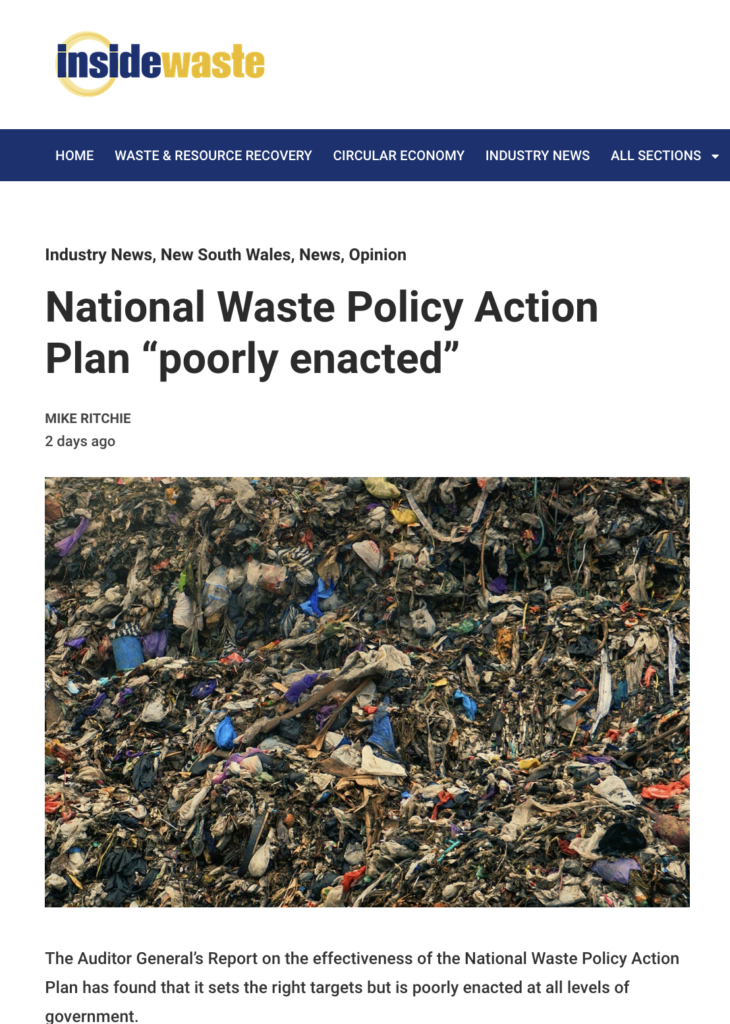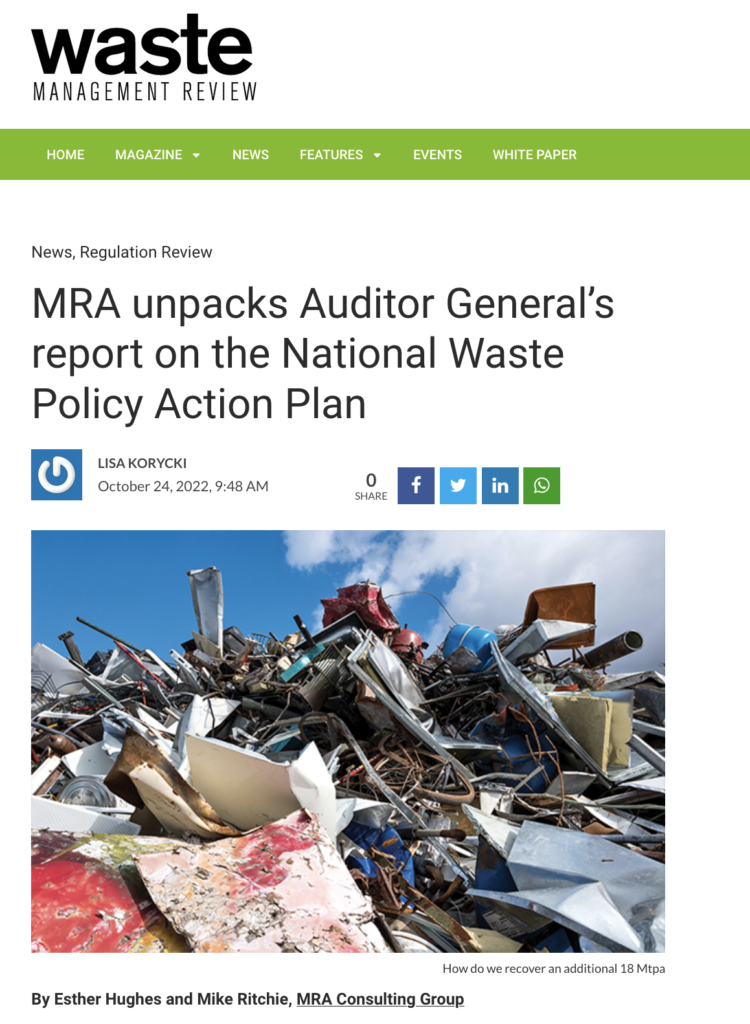Auditor general report on the National Waste Policy Action Plan
By Esther Hughes, Principal Environmental Planner, and Mike Ritchie, Director, MRA Consulting Group


The 7 National Targets of the Plan are:
- Ban the export of waste plastic, paper, glass and tyres;
- Reduce total waste generated in Australia by 10% per person by 2030;
- Achieve 80% average resource recovery rate from all waste streams by 2030;
- Significantly increase the use of recycled content by governments and industry;
- Phase out problematic and unnecessary plastics by 2025;
- Halve the amount of organic waste sent to landfill by 2030; and
- Make comprehensive, economy-wide and timely data publicly available.
While the Action Plan’s governance arrangements were seen as being largely fit-for purpose, the Auditor General’s report found that the implementation of the Plan is only partly effective.
The Plan’s effectiveness is hindered by a lack of scope and deliverables against which progress can be assessed. The Plan is at risk of not having the accountability mechanisms in place to ensure that it can be implemented within the 10-year framework.
In response, the Department of Climate Change, Energy, the Environment and Water (DCCEEW) is developing reporting, risk management, performance, and monitoring and evaluation frameworks. Scope and deliverables are to be coordinated for both Australian Government led actions and actions led by others.
It is now the end of 2022. Achieving the Targets in the National Waste Action Plan is almost out of reach without concerted action.
Let’s look at one Target for example – 80% diversion by 2030.
This is the most ambitious action in the Plan. By 2030, the projected national waste generation rate is 70 million tonnes per annum (Mtpa). Hence the goal to recover 80% of that equals 56 Mtpa, requiring an addition growth in the resource recovery sector of a huge 18 Mtpa over the 8 years remaining. That is over 2 Mt growth per year.
Historically the industry has grown recycling and resource recovery at about 1 Mt per year. So, we need to double the rate of investment in new collection services and processing infrastructure.

How do we recover an additional 18 Mtpa?
To achieve an 80% diversion rate by 2030 we need to identify and capture that additional 18 MT. There are not many mechanisms to do so. MRA has identified the eight key drivers:
- Landfill levies do the heavy lifting but are not rising fast enough. They average $100/t across Australia (with a 60% recovery rate at present) and probably need to be about $200/t to drive the rapid transformation we need (80% recovery).
- Bans on materials to landfill. Europe simply stops things being landfilled, removing the cheapest option from the table.
- Organics collection mandates for household and commercial waste. The 2030 household organics to landfill ban for NSW is too slow, but better than several other States that have no mandated targets.
- Develop end markets to bring about a pull-through effect. No point in diverting materials from landfill if they don’t have a productive use.
- Infrastructure for sorting mixed waste into reusable streams and for reprocessing. The private sector will fund it if they have the right price signals.
- Planning precincts for resource recovery infrastructure to speed up the approvals process.
- EfW is in its infancy and has a case of the wobbles, but is necessary if we are to achieve 80% diversion.
- A Plan by each State, to get to 80% diversion. Not a single State Government has put the maths down in paper – what waste streams, what tonnages, what infrastructure, where and when.
At this point in time, the National Waste Action Plan is not on track to meet its targets. While the Auditor General’s Report has generated increased accountability and improved risk management, meeting the 80% recovery rate requires multiple coordinated efforts to drive materials from landfill and make it easier to recover resources. And it is only 1 of the seven national targets.
This article has been published by the following media outlets:





